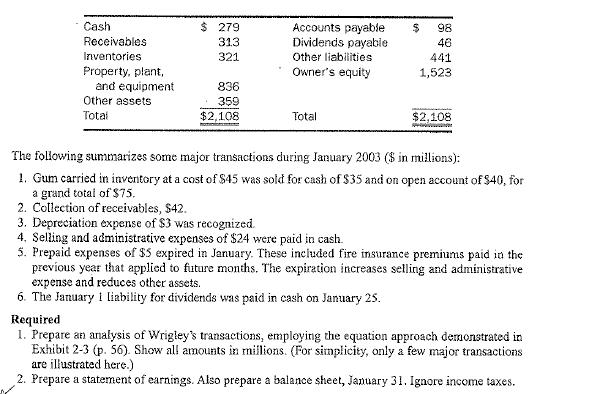Analysis of Transactions, Preparation of Statements . Wm. Wrigley Jr. Company manufactures and sells chewing gum. The
Question:
Analysis of Transactions, Preparation of Statements . Wm. Wrigley Jr. Company manufactures and sells chewing gum. The company's actual condensed balance sheet data for January 1, 2003 follows ($ in millions):

Fantastic news! We've Found the answer you've been seeking!
Step by Step Answer:
Related Book For 

Introduction To Financial Accounting
ISBN: 0131479725
9th Edition
Authors: Charles T Horngren, John A Elliott
Question Posted:





